#maryam mirzakhani
Text
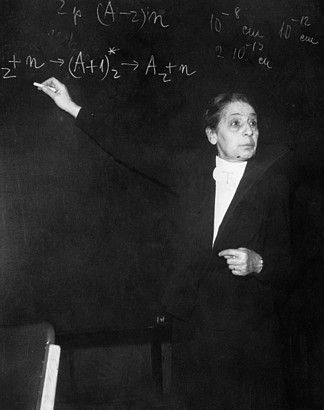


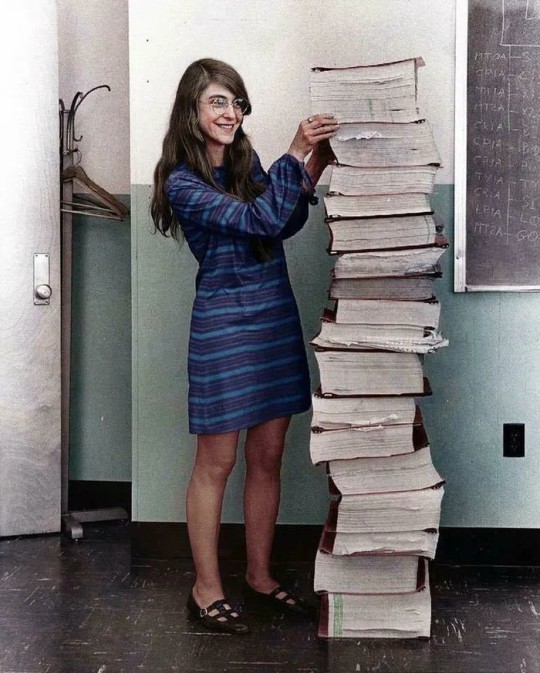



I'm getting ready for going to uni so I'm gonna post a lot about it to keep myself motivated. These are some of my favourite people in math and physics. Also a reminder that science is not for an specific group. We all belong to it. Don't be afraid of choosing a male dominated field. Have a good day everybody.
#mathematics#physics#uni#science#maryam mirzakhani#Sabrina pasterski#richard feynman#margaret hamilton#lisa randall#chen yang
99 notes
·
View notes
Quote
The beauty of mathematics only shows itself to more patient followers.
Maryam Mirzakhani
#Maryam Mirzakhani#thepersonalquotes#Beauty#Mathematics#follower#following#patient#show#quotes#literature#lit#prose#life quotes
162 notes
·
View notes
Text
Maryam Mirzakhani, first woman to win Fields medal in mathematics

Maryam Mirzakhani was one of the greatest mathematicians of her generation. She made monumental contributions to the study of the dynamics and geometry of mathematical objects called Riemann surfaces. Just as impressive as her theorems was her ability to push a field in a new direction by always providing a fresh point of view. Her raw talent was rare, even among the most celebrated mathematicians, and she was known for having a taste for difficult problems. -Kasra Rafi, Nature journal
For many Iranian women in STEM, she is a light and a role model. She's the deity we all look up to every time we get disheartened. But for the regime she was just a woman. Veil first, being treated like a human being next. To the point that when she passed away, due to breast cancer, IRIB and many regime newspapers who covered her passing news, photoshopped her photo to put obligatory hijab on her head. They tried to name her achievements as their own even though one of the main reasons she left Iran was because of how lowly intelligence was treated by this government.
Today was her birth date. RIP to the woman who is the symbol of mathematics in Iran.
#iran#politics#human rights#feminism#maryam mirzakhani#middle eastern women#women in stem#mathematics#mathematician#women#women life freedom#female scientists#women in science#nature journal#iranian women#iranian#middle east
124 notes
·
View notes
Quote
I don’t think that everyone should become a mathematician, but I do believe that many students don’t give mathematics a real chance.
Maryam Mirzakhani
#Maryam Mirzakhani#quotelr#Mathematics# Thinking# Chance# believer# doing# everyone# many# real# student#quotes#literature#life quotes#author quotes#prose#lit#spilled ink#writers on tumblr#writing inspiration#poets on tumblr
143 notes
·
View notes
Text
My brief, vague, scattered review of Almost Nowhere
Welp, I finished it, all 1079 pages of it. (Really 1077 pages with the first and last essentially acting as a front and back cover.) As the book is of an unwieldy length and I don't have much time or brainpower at the moment, this post is going to comment on just some aspects of it. Also, as I never managed to gain anything close to mastery of exactly how the plot worked, most of this is going to be vague and avoid discussions of the plot events, character decisions or traits, or anything that specific really. I think a couple of people wrote spoilery reviews; I don't feel very capable of this (nor of giving a very good description of the novel to someone else at a level of concreteness that they would reasonable expect.)
So, I would say no concrete spoilers to follow, and only a couple of quite vague ones.
I noted this in other posts written while I was in the midst of the novel, but I have to say it again because it's one of the most pertinent parts of my experience reading this: Almost Nowhere is the most cerebral fiction-writing I've ever read (with the possible exception of the few chapters of Harry Potter and the Methods of Rationality that I've read), on just about every level including narrative style, plot mechanics, and the ideas and themes explored -- there are even occasional fictional-scientific lectures inserted from time to time (which I found quite enjoyable actually)! More generally, the writing just screams of sheer IQ points both on the part of the author and on the part of the expected audience, in the use of a dazzling vocabulary as much as the elaborate plot and fictional-scientific situations one has to keep track of the characters being in. (It's interesting to note, though, that the cast of characters is actually quite modest, perhaps the fewest I've ever seen for a novel of this size: the complexity of the plot doesn't arise from a complexity of relationships among characters but from a distorted timeline and an array of alternate-reality situations.)
For this reason, I can't help but continue to compare this work to what I've read of Eliezer Yudkowsky, who similarly exudes sheer IQ and writes with an unabashedly cerebral style. Rob (the author, Tumblr-user Nostalgebraist) may not care much for the comparison, since as far as I know he doesn't align himself with Yudkowsky's rationalist movement or consider himself particularly in sympathy with Yudkowsky's worldview. But, while I have very little experience with Yudkowsky's fiction-writing (the main thing I've read of his is the Sequences), my impression is that their fiction is extremely different, that Yudkowsky's fiction comes across as just a transparent "mouthpiece" for his rationalist views and ideas, and that Yudkowsky has far less talent for fictional narrative. HPMoR (or what I've read of it) gives me an interesting plot and characters and makes me think about rationalist-y ideas in a direct, easy-to-follow way. Truly emotional non-cerebralness is actually pretty frequent in HPMoR but conveyed in a way I recall finding rather awkward. Almost Nowhere, on the other hand, took me on a vast, sweeping journey, where an even greater proportion of the scenes carry a colder, more dispassionately intellectual ambience, where moments of raw emotional intimacy are rather few and far between but are far better written when they do occur.
I think this is ultimately why I stuck with Almost Nowhere despite struggling to follow many aspects of the plot (while I lost too much motivation only a dozen or so chapters into HPMoR): I felt like I was being taken somewhere and was able to enjoy where it was taking me. The whole novel felt like a slightly surreal dream and an escape to a far vaster space than the one I inhabit in real life. Perhaps the feeling of being in a dream enabled my brain not to particularly care about precisely following the intricacies of the plot, as tends to be one's brain state in dreams. Of course, I shouldn't leave this as an implied "excuse" for not doing a good job of following: among the main reasons were intellectual fatigue from the general nature and business of the rest of my life, being a bit too rushed to get through the novel so that I can move to the rest of my reading list, general mental laziness, and, well, a dash of general mental ineptitude I suppose.
Specifically, what I struggled throughout to follow was some of the timeline shenanigans and that paths carved out within them by various individual characters, as well as recalling characters' experiences and motives at different times, and just generally keeping track of the scifi mechanics. I also had a tendency to glaze over some of dense dialogs that were more... I hate to keep using the word cerebral but don't know how else to characterize them... or that were more technical or jargon-filled or sounding like computer coding. Regarding the scifi mechanics, I did enjoy the occasional lengthy "lessons" delivered by characters and mostly followed their teachings but had a tendency to forget many of the finer (but still important) points later on -- for instance, Sylvie's big fictionally-written-lesson chapter at the end was really fun reading and I followed the interesting ideas going on but (even though it was near the end) did have trouble remembering everything in it pretty shortly afterwards.
The fictional-scientific mechanics themselves made for a very interesting elaborate thought experiment, and for the most part they made a lot of sense, as in, some hypothetical universe could work under these mechanics. I'm not sure that keeping vague links between different paths among alternate realities in the form of dreams or nostalgium doesn't seem like a bit of a cheat, but I'd have to think over it more deeply before deciding that, and I liked how it played in the story. I was a bit taken aback near the beginning about the role of Maryam Mirzakhani's fictional-scientific discoveries since as far as I knew Mirzakhani never worked on such things, but I much later realized that the earlier parts of the novel were written when she was still alive and young and potentially able to make discoveries of that nature in the then-future (for those who don't know, she tragically died in the late 2010's at age 40, partway through the writing of Almost Nowhere and shortly after becoming the first woman to get the Fields Medal).
As I've mentioned, the cast of distinguishable characters is very modest for such a huge novel. The characterization of each is on the subtle side, and to some extent I don't think I ever truly got to understand the deepest layers of Grant and Cordelia because I didn't put in the right amount of effort. I expect the only two which are memorable enough to stick with me for years when I look back on reading this are Azad and Sylvie. Azad was a pleasure to read and I had to enjoy the scenes where he was present or narrating -- interestingly he has one major Bad Moment around the middle of the novel in which he behaves in a certain way that earns him a ton of criticism at the time, and then after all the fuss is made it all seems to sort of get forgotten about. I don't know what I'm really supposed to think of him ultimately, but I'll miss his beautifully intellectual soul. Sylvie's scenes, in contrast, are a bit grating to read, but I suspect they're supposed to be. In a way, I know even less how I should feel about him than about Azad: his deepest biases and motives frequently seemed to exist in an occasionally-clashing tension. The bleak cacophony surrounding him is punctuated with sharp humor that I appreciate: he's a bit of dark vortex but he's also such a good boy.
The idea that we eventually get to see the characters get together and write the book that we are now reading doesn't seem original to this work of fiction, but I can't think precisely where I've seen it anywhere else, and it was fun. Rob's ability, as shown (to a milder extent) in The Northern Caves to be able to speak and write in very distinct character voices is impressive and maximally showcased here.
The novel, as Rob pointed out in one of his posts about it, comes with three distinct parts, the second of which distinguishes itself by having chapters numbered in Arabic numerals with chapter titles and is built of scenes with an entirely different flow. This second part was easily my favorite to read and felt more like surreal and placidly dreamlike escapism than any other area of the book. I don't know if anyone else has made comparisons between the fictional-novel-within-the-fiction-novel The Northern Caves (Rob's novel called The Northern Caves is the only other of his that I've read -- and liked a lot -- and its plot revolves around a bizarrely opaque thousand-plus-page novel of the same title), but I couldn't help being reminded of my conception of the fictional novel TNC throughout Almost Nowhere (also a thousand-plus-paged rather difficult novel, with surreal aspects to the narrative and layer upon layer of meaning, even if it doesn't devolve into apparent nonsense partway through). And I made this connection the most during Part 2 of Almost Nowhere, recalling that the fictional novel TNC is explained to have a sort of middle "lucid section" made of vignettes which mostly consist of coherent dialog but in which the characters have different relationships than they did at the outset (i.e. in TNC the two main characters who were siblings now appear to be married). I felt sort of drawn toward experiencing the journey that TNC would take me along, particularly the middle lucid section part just consisting of little dialog scenes, and I felt like in a way I got some version of that through Part 2 of Almost Nowhere.
(This is the most spoilery I'll get:) The final chapter of the novel ends on the point of view of the character who I had forgotten (but soon realized) was the one the very first chapter began on. It felt only fitting to go back to the first part of the first chapter and skim it, to close the loop (so to speak). I was almost never actually emotionally moved by Almost Nowhere exactly, but with the ending-looped-back-to-the-beginning it came close.
I remember when the novel was first finished this past summer, Nostalgebraist made a post discussing the finished product a bit, and I ran into one or two effortposts by other people discussing how they felt about the plot and characters. I didn't want to spoil them at the time, and I didn't want to look for them just after finishing before I wrote my own thing (this post), but I'd like to find them now and would appreciate anyone pointing me to them (I can probably find the Nostalgebraist posts easily enough).
Anyway, it's impressive work Rob, congrats on finishing such a hefty project, and thanks for giving me a unique fiction-reading experience I'll never forget!
#almost nowhere#fiction writing#eliezer yudkowsky#harry potter and the methods of rationality#sci fi#time travel#maryam mirzakhani#the northern caves
35 notes
·
View notes
Quote
The beauty of mathematics only shows itself to more patient followers.
Maryam Mirzakhani
#Maryam Mirzakhani#Beauty#Mathematics#follower#following#patient#show#quotes#life quotes#thepersonalwords
61 notes
·
View notes
Text

6 notes
·
View notes
Text
I am a slow thinker, and have to spend a lot of time before I can clean up my ideas and make progress.
22 notes
·
View notes
Text
The phrase "two Bacons away from a bunch of raging transphobes" keeps cropping up in my discussions of my current main fandom which is both hilarious and concerning but seeing as I am safely not two Bacons away from raging transphobes, I feel like I can make this funny comment.
1 note
·
View note
Text

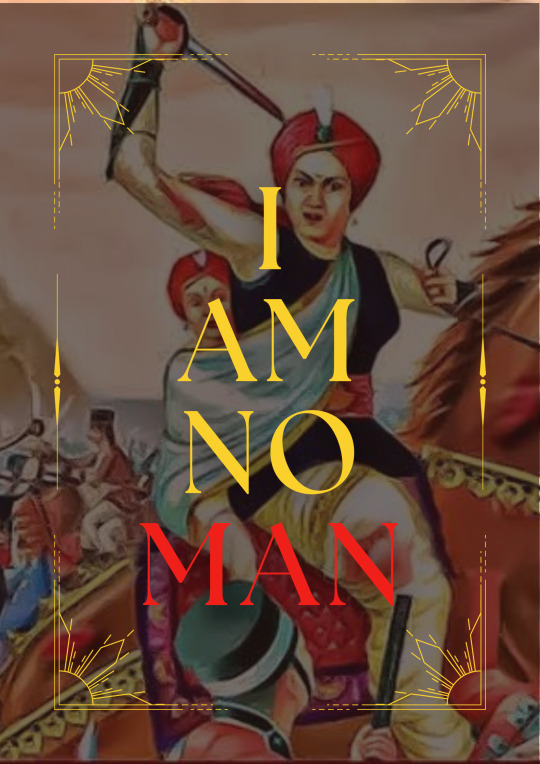
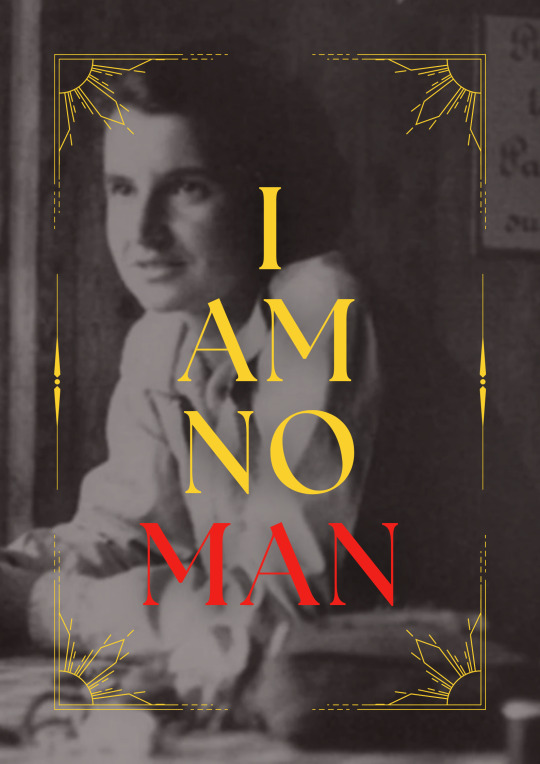





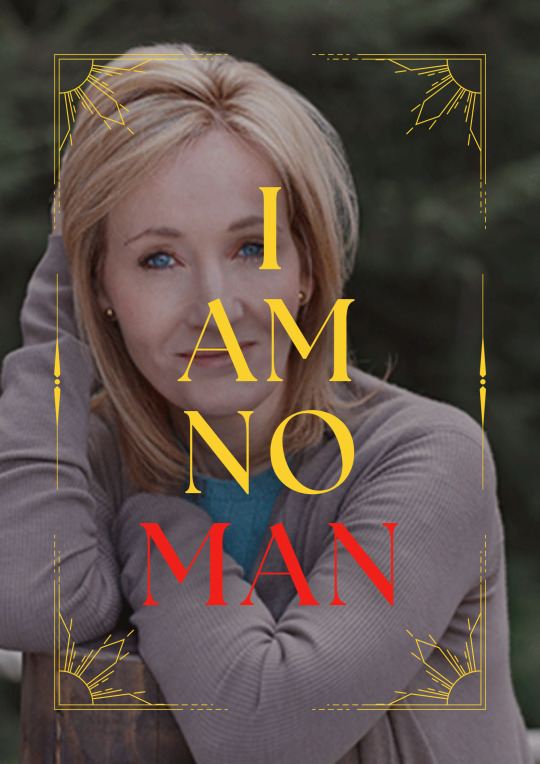
Throughout history, women have left an undeniable impact on society with their hard work, creativity, and dedication to progress. Unfortunately, their accomplishments have often gone unnoticed, been undervalued, or even stolen. Despite these challenges, brave women of today continue to push boundaries, break barriers, and pave the way for a more fair and equal world. It's our duty to keep going, so that future generations of women can inherit a kinder, more just, and supportive world. By following in the footsteps of the incredible women who came before us, we can create a world where every woman can flourish and succeed, and where their contributions are recognized and celebrated.
Joan of Arc is a patron saint of France, honored as a defender of the French nation for her role in the siege of Orléans and her insistence on the coronation of Charles VII of France during the Hundred Years' War. Claiming to be acting under divine guidance, she became a military leader who transcended gender roles and gained recognition as a savior of France. She was put on trial by Bishop Pierre Cauchon on accusations of heresy, which included blaspheming by wearing men's clothes, acting upon visions that were demonic, and refusing to submit her words and deeds to the judgment of the church. She was declared guilty and burned at the stake on 30 May 1431, aged about nineteen.
Rani Lakshmibai was the Maharani consort of the princely state of Jhansi from 1843 to 1853. She was one of the leading figures in the Indian Rebellion of 1857 became a symbol of resistance to the British rule in India for Indian nationalists. When the Maharaja died in 1853, the British East India Company under Governor-General Lord Dalhousie refused to recognize the claim of his adpoted heir and annexed Jhansi under the Doctrine of Lapse. She rode into battle with her infant son strapped to her back, and died in June 1858 after being mortally wounded during the British counterattack at Gwalior.
Rosalind Franklin was a British chemist and X-ray crystallographer whose work was instrumental in the discovery of the structure of DNA. Her contributions were largely overlooked by her male colleagues, James Watson and Francis Crick, who used her data without her permission or acknowledgement. This theft of her intellectual property and erasure of her contributions is a prime example of the systemic sexism that has historically plagued the scientific community.
Hedy Lamarr was an Austrian-American actress and inventor who co-invented a frequency-hopping spread spectrum technology during World War II that was used to guide torpedoes. However, her contributions were largely ignored and dismissed by male engineers and the military at the time. It was only later in life that she received recognition for her scientific achievements.
Emma Weyant is an American competitive swimmer. She was the US national champion at the individual medley. She qualified for the 2020 Olympic Games in the 400m individual medley and won the silver medal in this event. Weyant finished second in the 500-yard freestyle at the 2022 NCAA Division I Women's Swimming and Diving Championships. She was beaten by William (Lia) Thomas, a fetishist, who when competing as a member of the Penn men's team, which was 2018-19, ranked 554th in the 200 freestyle, 65th in the 500 freestyle and 32nd in the 1650 freestyle. Weyant is the fastest swimmer in the 500-yard freestyle and had her position stolen by a man.
Maryna Viazovska is a Ukrainian mathematician who made a breakthrough in sphere packing, solving the centuries-old mathematical problem known as the densest packing of spheres in dimensions 8 and 24. She was awarded the Fields Medal in July 2022, making her the second woman (after Maryam Mirzakhani), the second person born in the Ukrainian SSR and the first with a degree from a Ukrainian university to ever receive it.
Hannie Schaft was a Dutch resistance fighter during World War II who played a crucial role in the resistance movement against Nazi occupation. Schaft was a former university student who dropped out because she refused to sign a pledge of loyalty to Germany. Nazis arrested and killed her in 1945, just three weeks before the war ended in Europe. According to lore, Schaft’s last words were, “I’m a better shot,” after initially only being wounded by her executioner.
Shakuntala Devi was an Indian mathematician and mental calculator who was known as the "Human Computer" for her exceptional ability to perform complex mathematical calculations in her head. Her extraordinary abilities earned her a place in the 1982 Guinness Book of Records. Her lesser known achievement is that in 1977 she wrote what is considered to be the first book in India on homosexuality titled “The World of Homosexuals.”
J. K. Rowling is a British author and philanthropist. She wrote Harry Potter, a seven-volume children's fantasy series published from 1997 to 2007. Known for her philanthropy, she was doxxed and harassed after coming out with support for women's and gay rights in 2020. Rowling secretly donated hundreds of thousands of pounds to save 100 female lawyers and their families facing murder in Afghanistan. In 2022, she funded a women's only rape shelter in Edinburgh.
#this post was inspired by me being absolutely sick of trans activists claiming that joan of arc/rani lakshmibai/insert literally any other#strong woman#is actually a trans man#they were no man at all#women have been brave and strong and amazing throughout history#and they still are#if only you'd get your head out of your ass to take a look#radical feminism#radblr#terf#trans#misogny#i am no man
683 notes
·
View notes
Quote
The beauty of mathematics only shows itself to more patient followers.
Maryam Mirzakhani
#Maryam Mirzakhani#Beauty#Mathematics#follower#following#patient#show#quotes#life quotes#quotelr#literature#authorquotes#author quotes#lit#poetry#prose#spilled ink
97 notes
·
View notes
Text
•🌜Women in stem🌛•
✨ Ancient history ✨
Hypatia
Hatshepsut
Tapputi-Belatekallim
Theano
Aglaonice
Fang
Mary the Jewess
Pandrosion
Cleopatra the alchemist
✨The Middle Ages✨
Al- ‘Ijliyyah
Dobrodeia of Kiev
Trota of Salerno
Adelle of the Saracens
Hildegard of Bingen
Herrad of Landsberg
Zulema L'Astròloga
Adelmota of Carrara
Keng Hsien-Seng
✨16th Century✨
Isabella Cortese
Loredana Marcello
Sophia Brahe
Caterina Vitale
✨17th Century✨
Louise Boursier
Martine Bertereau
Maria Cunitz
Marie Meurdrac
Margaret Cavendish, Duchess of Newcastle-upon-Tyne
Marguerite de la Sablière
Jeanne Dumée
Elisabeth Hevelius
Maria Clara Eimmart
Maria Sibylla Merian
✨18th Century✨
Eleanor Glanville
Maria Margaretha Kirch
Catherine Jérémie
Laura Bassi
Emilie du Châtelet
Eva Ekeblad
Cristina Roccati
Jane Colden
Anna Morandi Manzolini
Wang Zhenyi
Caroline Herschel
Nicole-Reine Lepaute
Geneviève Thiroux d'Arconville
Elizabeth Fulhame
✨Early 19th Century✨
Sophie Germain
Anna Sundström
Sabina Baldoncelli
Lady Hester Stanhope
Mary Anning
Elisabetta Fiorini Mazzanti
Marie-Anne Libert
Jeanne Villepreux-Power
Orra White Hitchcock
✨Late 19th Century✨
Henrietta Vansittart
✨Early 20th Century✨
Hertha Ayrton
Katherine Parsons
Emmy Noether
Lise Meitner
Marjorie Lee Browne
Dorothy Vaughan
✨Late 20th Century✨
Jocelyn Bell Burnell
Katherine Johnson
Mae Jemison
Valentina Tereshkova
Valerie Thomas
Sally Ride
Lynn Conway
✨21st Century✨
Maryam Mirzakhani
Carolyn Bertozzi
Andrea M. Ghez
Jennifer Doudna
Shirley Ann Jackson
Donna Strickland
Frances Arnold
Karen Uhlenbeck
Jennifer Doudna
Marcia McNutt
Maureen Raymo
#science#stem#physics#maths#mathematics#chemistry#biology#astrophysics#astronomy#astronaut#education#women in stem#womens history#women#Steminist#history#stemblr
736 notes
·
View notes
Quote
I don’t think that everyone should become a mathematician, but I do believe that many students don’t give mathematics a real chance.
Maryam Mirzakhani
#Maryam Mirzakhani#thepersonalwords#Mathematics#quotes#literature#life quotes#author quotes#prose#lit#spilled ink#writers on tumblr#writing inspiration#poets on tumblr
31 notes
·
View notes
Text
Beginning in seventh-century Mecca and Medina, A History of Islam in 21 Women takes us around the globe, through eleventh-century Yemen and Khorasan, and into sixteenth-century Spain, Istanbul and India. From there to nineteenth-century Persia and the African savannah, to twentieth-century Russia, Turkey, Egypt and Iraq, before reaching present day London.
From the first believer, Khadija, and the other women who witnessed the formative years of Islam, to award-winning mathematician Maryam Mirzakhani in the twenty-first century, Hossein Kamaly celebrates the lives and groundbreaking achievements of these extraordinary women in the history of Islam.
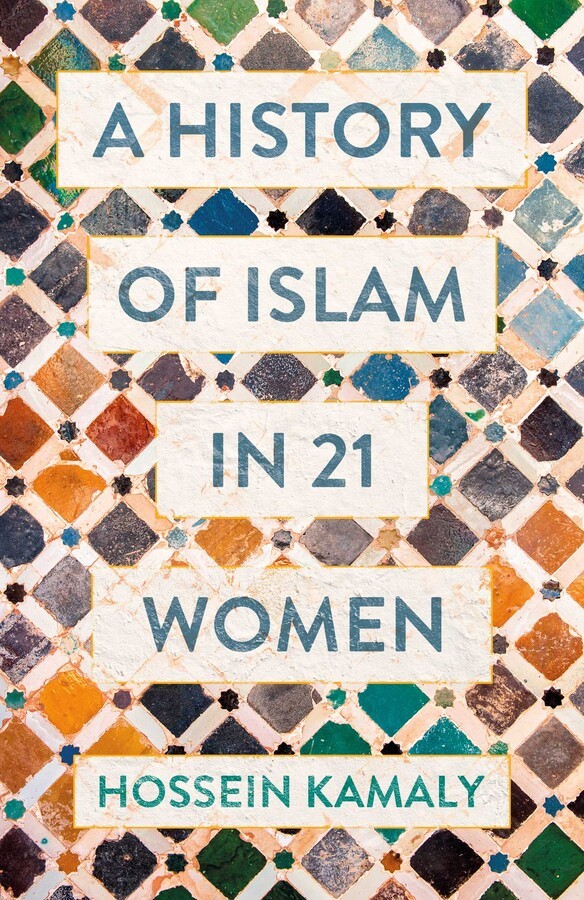

#book: a history of islam in 21 women#author: hossein kamaly#genre: non fiction#genre: feminism#genre: history#year: 2010s
11 notes
·
View notes
Text
A new record for Math Prize for Girls wins
Twelfth grader Jessica Wan three-peats, as MIT hosts the 15th competition for female middle and high school math enthusiasts.
Sandi Miller | Department of Mathematics

Florida Virtual School senior Jessica Wan was the winner of the 15th Math Prize for Girls (MP4G) annual contest for female-identifying contestants, held Oct. 6-8 at MIT.
She scored 17 out of 20 questions, which added up to make Wan the MP4G’s most successful contestant in its history; she also won the contest last year and in 2019, as an eighth grader. (MP4G paused for two years at the height of the Covid-19 pandemic.) Because Wan had won $82,000 in previous years, she was limited to only earning $18,000 this year by contest rules placing a $100,000 lifetime limit on winnings.
The 262 U.S. and Canadian middle and high school contestants took a two-and-a-half-hour exam that featured 20 multistage problems in geometry, algebra, and trigonometry. Here's an example of one of the questions:
The frame of a painting has the form of a 105” by 105” square with a 95” by 95” square removed from its center. The frame is built out of congruent isosceles trapezoids with angles measuring 45 degrees and 135 degrees. Each trapezoid has one base on the frame’s outer edge and one base on the frame’s inner edge. Each outer edge of the frame contains an odd number of trapezoid bases that alternate long, short, long, short, etc. What is the maximum possible number of trapezoids in the frame?
Hosted by the MIT Department of Mathematics and sponsored by the Advantage Testing Foundation and global trading firm Jane Street, the MP4G weekend culminated in an awards ceremony held at the Marriott in Kendall Square, Cambridge, Massachusetts. MIT electrical engineering and computer science (EECS) Professor Regina Barzilay gave the Maryam Mirzakhani keynote lecture, “Uncovering Mysteries of Life Sciences with Machine Learning.” The event was emceed by MP4G alumna In Young Cho, a quantitative trader from Jane Street who placed third in 2010, and featured a performance by the MIT Logarhythms.
In second place was eighth grader Selena Ge of Jonas Clarke Middle School in Lexington, Massachusetts, with a score of 14 to earn $20,000. She also was awarded a Youth Prize of $2,000 as the highest-scoring contestant in ninth grade or below.
The next four winners were junior Hannah Fox of Proof School in California, who received $10,000 with a score of 12; with scores of 11 each, $4,000 was awarded to sophomores Shruti Arun of Cherry Creek High School in Colorado, Catherine Xu of Iowa City West High School in Iowa, and senior Miranda Wang of Kent Place School in New Jersey. The next 12 winners received $1,000 each.

The top 41 students are invited to take the 2023 Math Prize for Girls Olympiad at their schools. Canada/USA Mathcamp also provides $250 merit scholarships to the top 35 students who enroll in its summer program.
Keep reading.
Make sure to follow us on Tumblr!
4 notes
·
View notes
Text
You know what? Fuck it.
Girl Dinner



Carme Ruscalleda i Serra, who holds seven Michelin stars across her three restaurants in Catalonia and Japan, known for bringing traditional Catalan cuisine to an international audience.



Mashama Bailey, winner of the 2022 James Beard Award for Outstanding Chef and Chairwoman of the Edna Lewis Foundation, which preserves and celebrates the history of African-American cookery.



Zineb "Zizi" Hattab, the first vegan chef in Switzerland to be awarded a Michelin star for her restaurant KLE in Zurich; her cooking is noted for its intense flavors and complex balanced dishes in a casual setup.
Girl Math
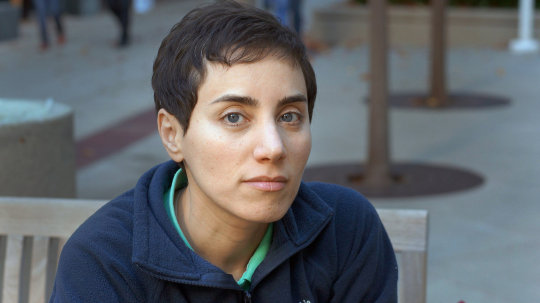

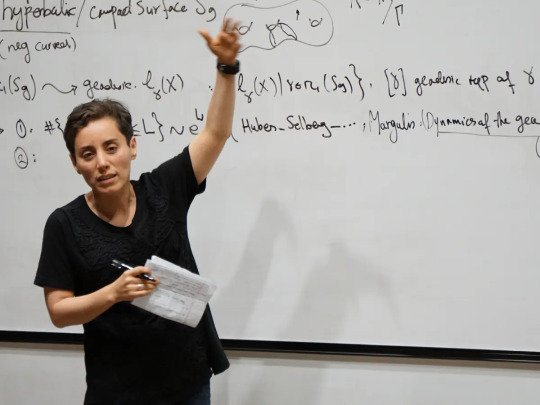
Maryam Mirzakhani, who won the Fields Medal (the most prestigious award in mathematics) in 2014 for her work on the dynamics and geometry of Riemann surfaces.
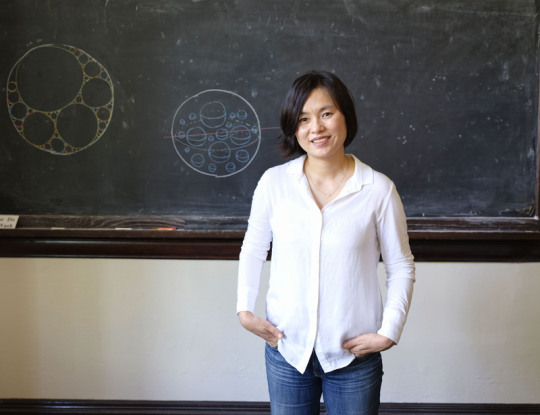


Hee Oh, Vice President of the American Mathematical Society, who has worked extensively on counting and equidistribution for Apollonian circle packings, Sierpinski carpets and Schottky dances.



Svetlana Jitomirskaya, who co-solved the Ten Martini Problem in 2019 and won the Dannie Heineman Prize for Mathematical Physics in 2020.
Girl Economics
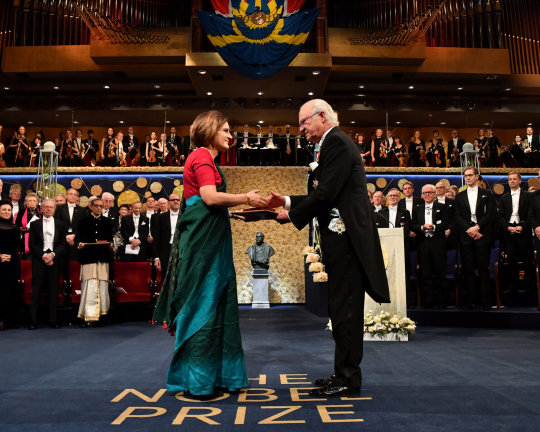


Esther Duflo, co-founder of the Abdul Latif Jameel Poverty Action Lab at MIT, professor of Poverty Alleviation and Development Economics, and co-recipient of the 2019 Nobel Memorial Prize in Economic Sciences.



Mariana Mazzucato, chair of the World Health Organization's Council on the Economics of Health for All and member of the United Nations' High-Level Advisory Board on Economic and Social Affairs.

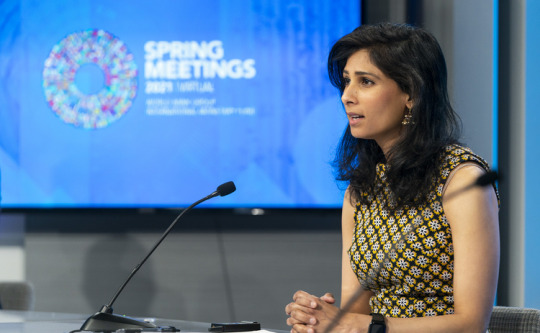
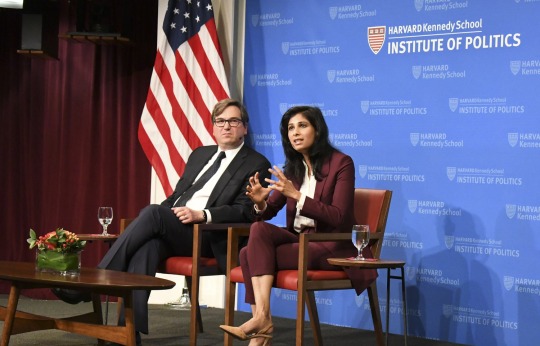
Gita Gopinath, deputy managing director of the International Monetary Fund, awarded the Pravasi Bharatiya Samman award in 2019 for her work as an economics academic.
Girls* are fucking rad actually. Pay them the respect they're due.
*This statement enthusiastically includes trans girls and women. Bigots kindly fuck off.
#girl dinner#girl math#girl economics#terfs dni#terfs die actually#'girl dinner' can be relatable but 'girl math' makes me want to set fires
6 notes
·
View notes